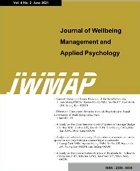- 권한신청
- E-ISSN2586-6036
- KCI
Analysis of Seasonal Airborne Radon Concentration Characteristics in Public-Use Facilities
Woo-Taeg KWON (Department of Environmental Health & Safety, Eulji University)
Abstract
Purpose: The purpose of this study is to investigate the characteristics of airborne radon concentration by season in public-use facilities in South Korea. Research design, data and methodology: The data is provided by the public data portal, and public-use facilities nationwide where radon in the air is measured are specialized sanatorium for senior citizens, libraries, childcare facilities, postpartum care centers, medical institutions, funeral halls, underground shopping malls, and underground subway stations. Results: The facility with the highest radon concentration in public-use facilities was childcare facilities with an average of 50.2 ± 21.7 Bq/m<sup>3</sup>, while the average of medical institutions was the lowest at 24.8 ± 5.7 Bq/m<sup>3</sup>. The season with the largest difference in average radon concentration between childcare facilities and medical institutions was in the order of fall (28.6 Bq/m<sup>3</sup>), followed by winter (28.1 Bq/m<sup>3</sup>), spring (23.0 Bq/m<sup>3</sup>), and summer (22.0 Bq/m<sup>3</sup>). Conclusions: The main concentration levels of each public-use facility shown in this study are all below domestic and international standards, but there is a significant concentration difference between facilities. By season, winter showed the highest average concentration (40.6 ± 21.3 Bq/m<sup>3</sup>) and summer showed the lowest average concentration (23.8 ± 14.0 Bq/m<sup>3</sup>).
- keywords
- Airborne radon, Public-use facilities, Season, Underground facilities, Concentration
- 다운로드 수
- 조회수
- 0KCI 피인용수
- 0WOS 피인용수














